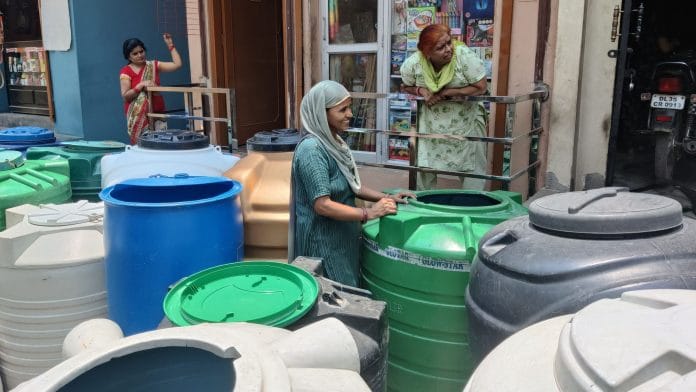New Delhi: At a yard in Adarsh Colony, Devli, six massive motors thrum and whirr as they suck water from pipes into the bellies of a fleet of tankers. Once sated, the tankers depart with military-like precision to deliver their precious cargo to waiting residents. The operation is swift, meticulous, profitable—and illegal.
As Delhi reels under a severe water shortage, the private tanker mafia is pulling out all stops to meet the rising demand. Filchingwater from the Jal Board is less risky than extracting it from the Yauma or diverting it from canals in Haryana—an issue the Delhi Lieutenant Governor addressed in a recent letter. These operators are seizing control of government-authorised borewells, diverting water from pipes, and illegally drilling into the ground. They are selling government water that would otherwise be freely available to residents, all while environmentalists raise alarms about Delhi’s rapidly depleting groundwater levels.
In Adarsh Colony, it’s the Delhi Jal Board’s pipelines that have been held hostage.
“It’s like Diwali for them,” says Rani Gupta, an Adarsh Colony resident, pointing to the damaged pipelines in the yard. These have been fitted with devices to divert water away from her community.
“They [water tanker companies] have blocked the government pipelines. They are siphoning water meant for our use and selling it back to us at exorbitant prices, while we run around desperately for water,” said Gupta.
Amid the water crisis, Delhi’s private tanker business is thriving. A 4000-litre water tanker that would typically cost Rs 500 now sells for Rs 5,000.
Operations in Adarsh Colony began five years ago, but the pace of ‘work’ has accelerated this summer—along with prices. Gupta now pays the tanker owner Rs 2,500 for 2000 litres of water, a dramatic increase from just Rs 200 for the same amount a month ago.
Across Delhi, neighbourhoods like Adarsh Colony that lack direct piped water access are paying exorbitant sums to the tanker mafia. The problem is exacerbated by the water authority’s inability to meet rising demand. In early June, the supply hit a seasonal low of 888 million gallons per day (MGD), far short of the 1290 MGD requirement, according to the DJB. Government estimates indicate that the current shortage affects nearly 28 lakh people in Delhi.
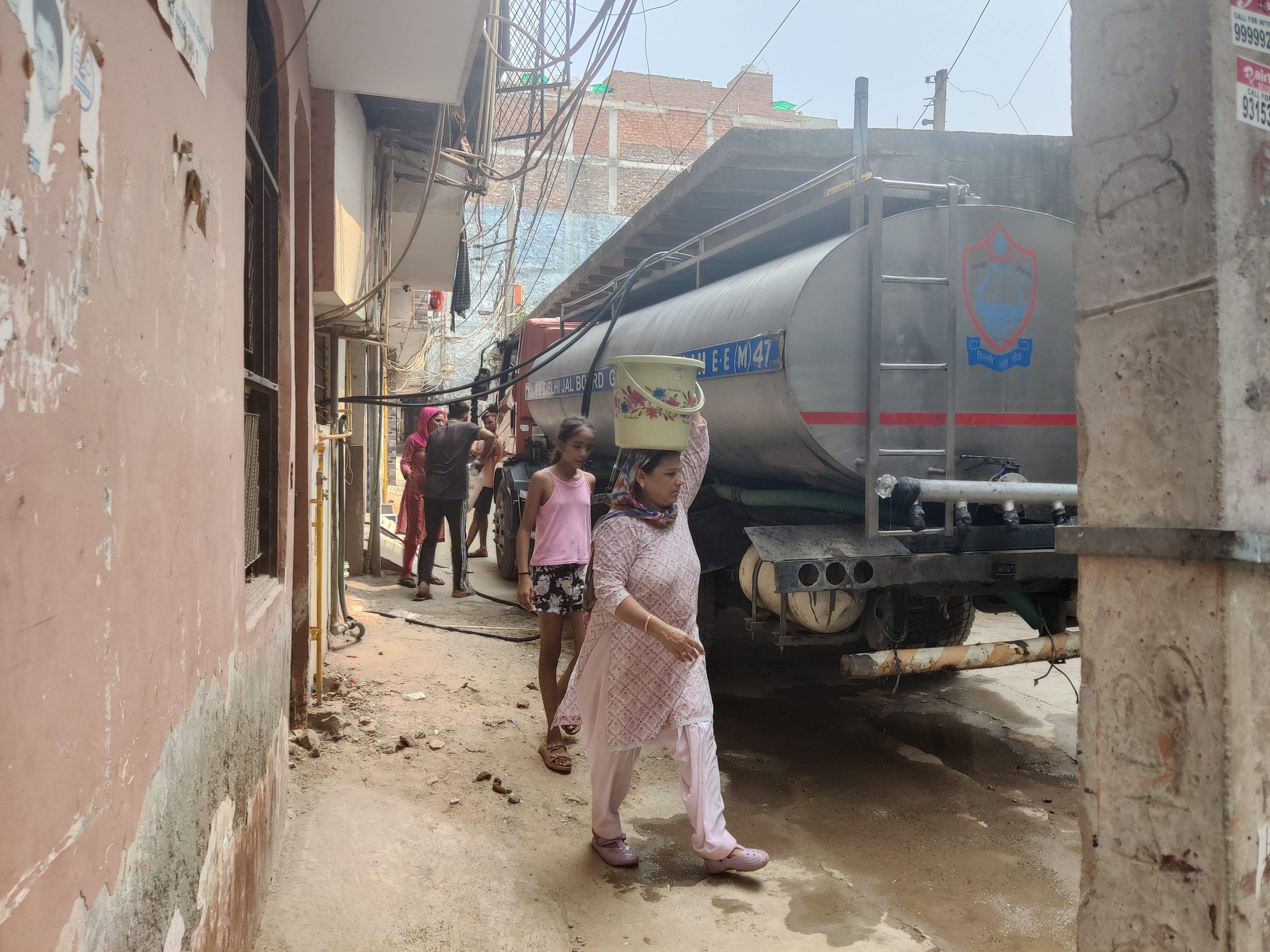
Amid this crisis, Delhi’s private tanker business is thriving. A 4000-litre tanker that would typically cost Rs 500 now sells for Rs 5,000, with longer wait times.
While the city remains parched, political parties and departments engage in a blame game. Delhi’s Lieutenant Governor VK Saxena recently attributed the city’s water shortage to the unchecked private water tanker mafia. However, the ruling Aam Aadmi Party (AAP) government has dismissed these claims, stating that the L-G has “chosen to raise the bogey of leakages and private water tanker mafia within Delhi.”
The tanker mafia business operates at multiple levels. They receive support from politicians, police, and lower-ranking officials in the [Delhi] Jal Board. Pipelines were either damaged or diverted. They ensure that the demand for water remains constant
— Puneet Singhal, social and environmental activist
“For at least two weeks, teams of Delhi Police, which report to the L-G, have been patrolling the DJB water pipelines. Why doesn’t the L-G make public how many private tanker mafia operators have been caught or how many FIRs have been registered?” a Delhi government spokesperson shot back.
Despite being flagged by activists and politicians during this crisis, the private tanker mafia’s operations remain discreet—and ubiquitous, some running right under the noses of local police and the Jal Board.
At the entrance of a tanker business in Adarsh Colony, remnants of posters advertising ‘Tarachand Private Tankers’ are still visible. The only precaution taken during the recent scrutiny of the city’s water crisis has been to remove some of the more overt advertisements.
“The residents need water. We are helping them,” says a woman who declined to give her name but identified herself as a co-owner of the tanker service.
Parched citizens, thriving thieves
Kavita Sharma, 34, from south Delhi’s Sangam Vihar, is desperate enough to almost agree with the tanker owner. She booked a DJB tanker on 16 June, which finally arrived eight days later.
With no government piped water connectivity, she has no choice but to pay a local private tanker operator Rs 1,000 for 2,000 litres.The service is efficient, with a 24-hour delivery guarantee.
“I called them last night, and they confirmed a time for today. We have to pay a lot of money, but at least we are getting water,” says Sharma. She has lined the front of her house with tanks, buckets and every available vessel. Not a drop of water can be wasted.
It is this desperation that the private tanker businesses are cashing in.
Unlike in Adarsh Colony where water is being stolen from pipelines, in Sangam Vihar the tanker mafia has hijacked government borewells. These are privately run wells authorised by the Jal Board for clusters of homes where water pipelines have not been laid.
The tanker mafia is only capitalising on the existing problem because the poorest of the poor in the city are forced to depend on the tankers for their survival due to the absence of a water management and distribution plan
— Vimlendu Jha, environmentalist
In Sangam Vihar lane number 2, the community borewell pipe has been illegally extended into a photo studio. According to neighbours, the studio owner primarily uses the water for private needs but also sells it in small quantities to them at inflated prices. The scale of operations is smaller than his competitors.
Just two lanes ahead, another government borewell has been encroached upon. Large pipes are attached to it to fill private tankers. Ideally, these would serve as filling stations for government tankers in water-starved Sangam Vihar so that residents wouldn’t have to wait for tankers to come all the way from Greater Kailash—the nearest DJB water station.
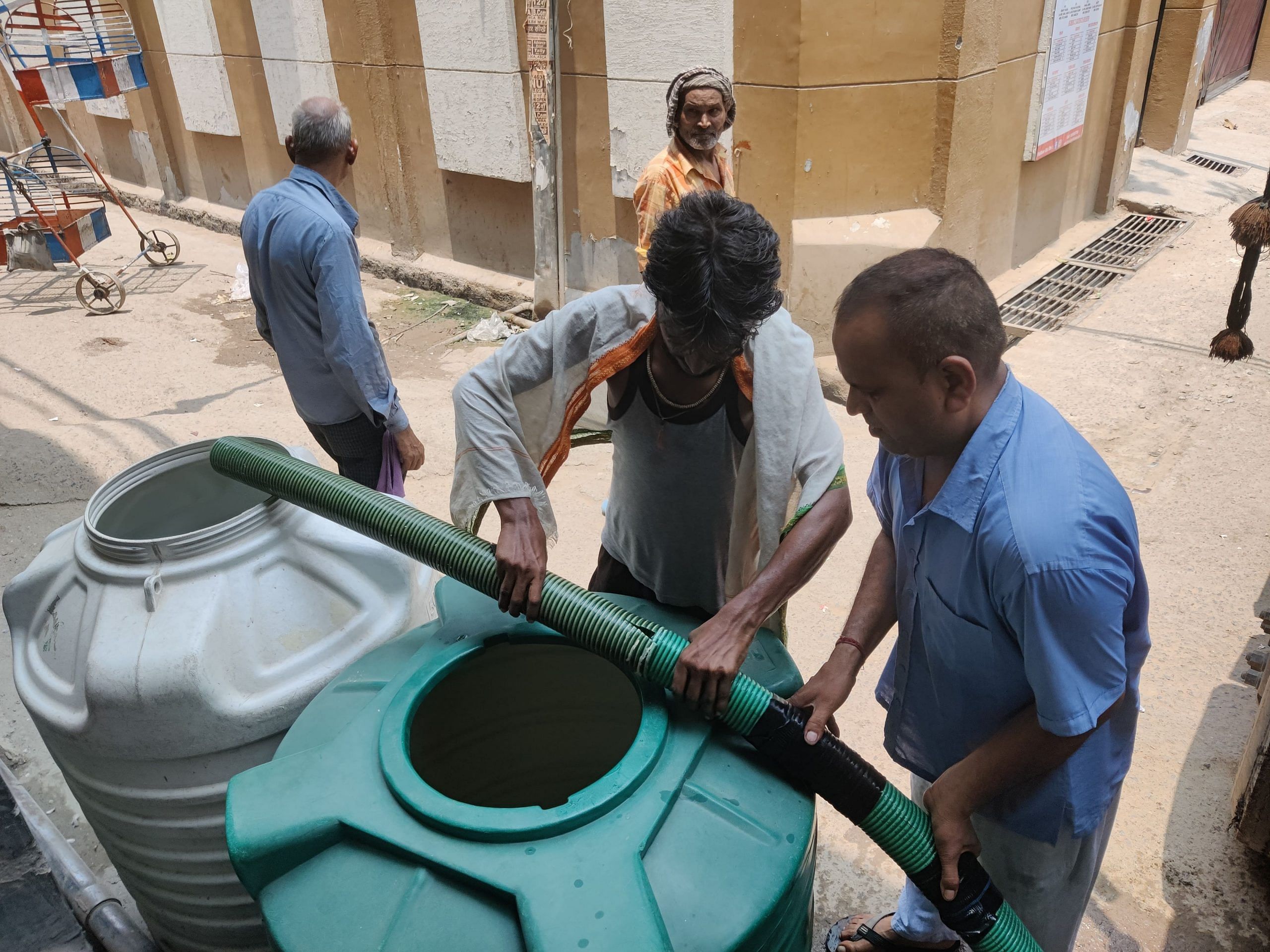
“These borewells are supposed to supply free water to five lanes. Now we have to buy water from them. When anyone confronts them [private tanker owners], they create a ruckus. The authorities are also turning a blind eye,” alleges Madhuri Rawat, another resident.
Many private tankers are also fed from private borewells. At least a dozen residents that ThePrint spoke to claimed that a former councillor runs a tanker business in the area. The source of water for his tankers is his private borewell. He has a small office near lane number 4, where his staff takes tanker bookings.
In a tiny office in one of the lanes of Sangam Vihar, the former councillor first confirmed his identity but quickly locked up his office.
“I have left the business,” he said.
Combating water theft
The underbelly of Delhi’s illegal water supply is not new, but the intensity of water theft has reached unprecedented levels.
Past attempts by the government to stamp out the thriving water tanker mafia met with limited success. In 2010, the Delhi government issued a notification asking all private borewell owners to voluntarily disclose their locations. In 2014, the Jal Board announced a voluntary disclosure scheme giving private bore and tubewell owners the chance to surrender their connections within three months—without repercussions.
“This exercise was carried out to create a database of borewells and tubewells in the city. This was to help the government formulate policies regarding groundwater extraction and to monitor the depleting groundwater,” a senior DJB official explained.
These borewells are supposed to supply free water to five lanes. Now we have to buy water from them. When anyone confronts them [private tanker owners], they create a ruckus. The authorities are also turning a blind eye
— Madhuri Rawat, a resident of Sangam Vihar
However, this notification yielded few results. In Sangam Vihar and Devli, only 52 voluntary disclosures were made, as opposed to an estimated 243 bore and tubewells, according to DJB documents.
Not all of these undisclosed borewells are being used to feed private tankers. Some have dried up or are simply not in use.
In Okhla, another neighbourhood in south Delhi, old government borewells on the banks of the Yamuna are used to fill tankers. The groundwater level is maintained in the locality due to its proximity to the river. According to residents, the entire operation of fillingthe tankers is more discreet—conducted under the cover of night.
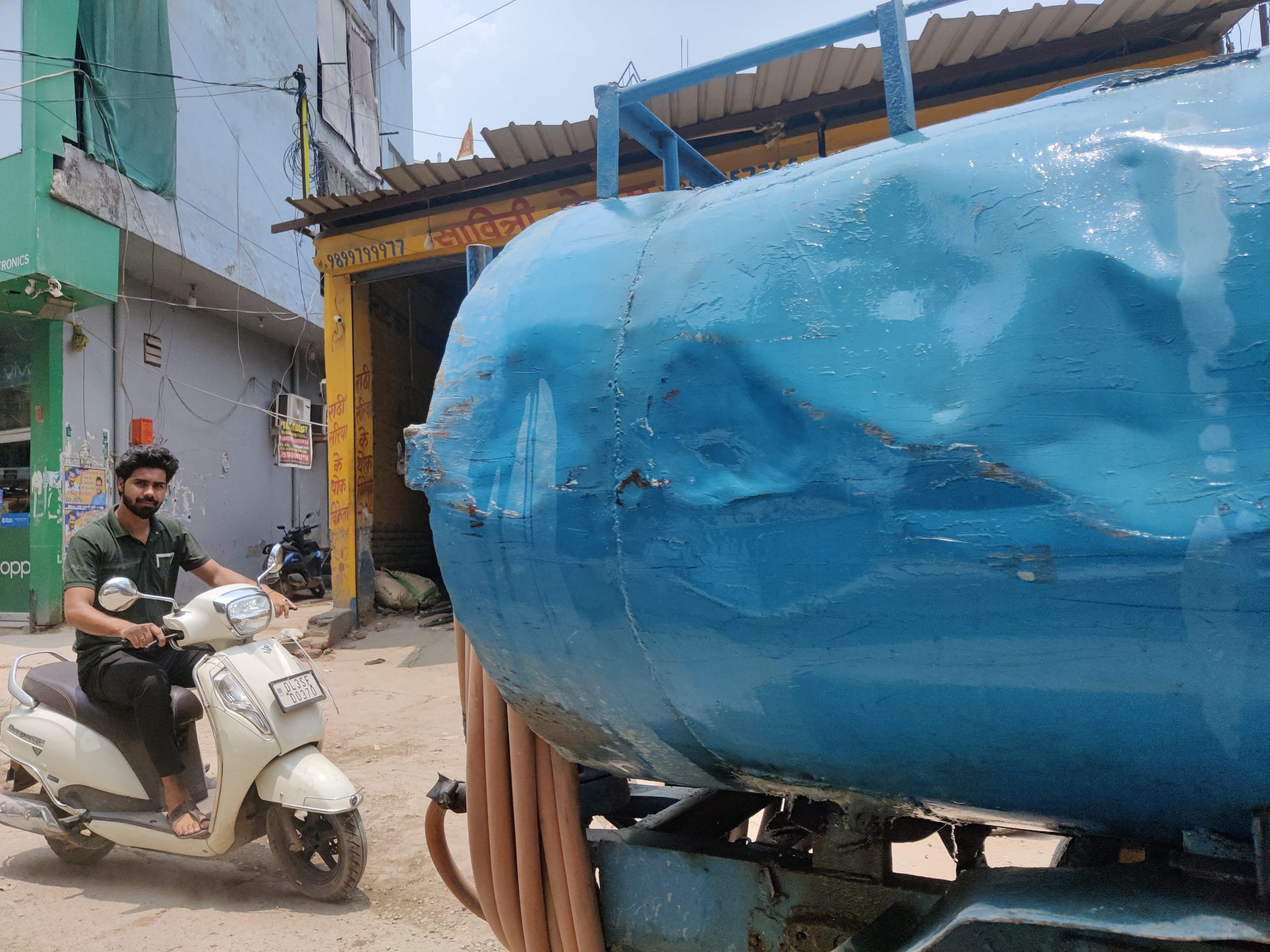
“They pump water from these borewells at night. The same water is supplied in the morning,” said Haseena Begum, a resident of Okhla, who produces a collection of business cards for these tanker services. But unlike in some other neighbourhoods, the situation at Okhla is not as dire.
“Things have improved here now. There was a time when we were entirely dependent on these tankers. There was no check on the quality of water supplied, and they charged whatever they pleased,” she adds.
ThePrint called two private water tanker services in Okhla, but the owners refused to comment.
“We don’t do it,” one said, while the other immediately disconnected the call.
The Delhi Police crack down on the private tanker mafia—when they receive complaints from residents. “During the current water crisis, we have deployed forces along the Munak Canal—the western canal of the Yamuna connecting Delhi and Haryana—to check water theft,” said Delhi Police spokesperson Ranjay Atrishya. On the other hand, officials at Sangam Vihar and Devli police stations claim no FIRs have so far been lodged against tanker operators who have a chokehold in these neighbourhoods.
Turf wars
The current water crisis in the city has also revived the dying tanker business in south Delhi’s Dwarka. Up until a decade ago, several pockets of the sub-city were not connected with piped supply. With more neighbourhoods getting piped connections, the business had almost died down—until this year. The prolonged water shortage has brought private tankers back in business.
“Demand is coming from the under-construction building sites along the expressway and Dwarka Extension,” said a former tanker business owner who requested anonymity, adding that the bulk of the water is being sourced from Haryana.
Tanker drivers use uncut roads along the Dwarka Expressway, Najafgarh and Gurugram to reach these localities.
Last year, a territorial dispute between two private water tanker suppliers operating along the Dwarka Expressway led to one supplier setting his competitor’s office on fire. An FIR was registered in Haryana and the accused water tanker owner was arrested for vandalism.
“There are local villages on the Haryana side, with large tubewells feeding the tankers. Some smaller players also draw water from the Yamuna,” he added.
Water tanker owners have divided Delhi-NCR among themselves and guard their turf zealously. Bimlesh Devi from Adarsh Colony learned this the hard way. She had organised a small get-together and placed an order with her usual local tanker suppliers. As abackup, she called a tanker operator from another area.
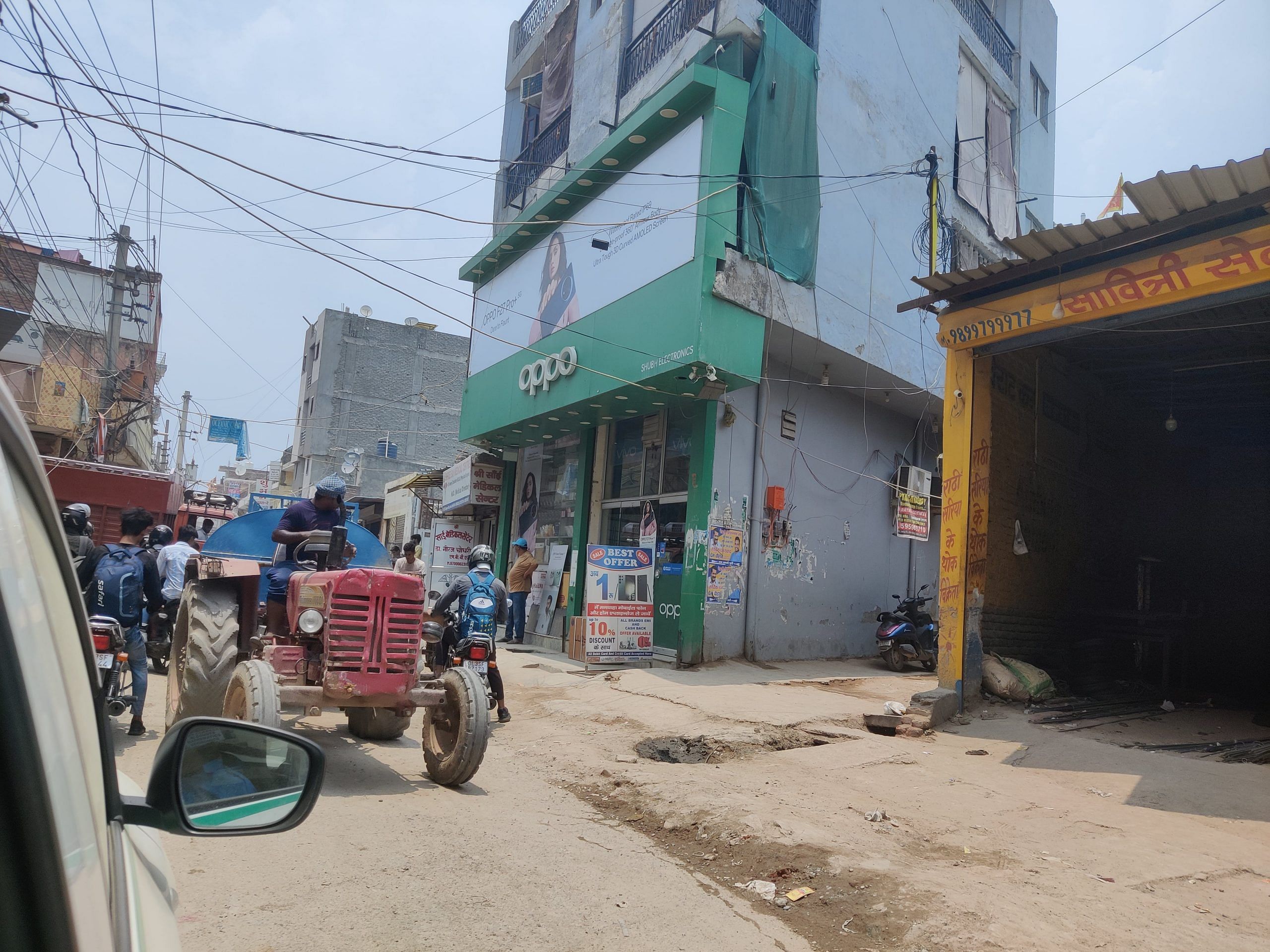
Just minutes after the tanker entered her street, people from the local operator’s office surrounded the truck and allegedly assaultedthe driver and his helper.
“They have marked areas between themselves. They do not allow any outsider to invade their territory,” Bimlesh said.
According to activists, it’s common practice for operators to hire muscle to keep outside operators away, intimidate residents who might go to the police, and quell any arguments or fights that may erupt due to water distribution. Tall, burly men often guard these tankers and do not hesitate to use force if residents don’t toe the line.
“You tell me, which respectable businessman keeps goons? If you are running a legal business, why do you need such bouncers? They threaten anyone who speaks out against them or tries to complain,” Bimlesh added.
Last year, a territorial dispute between two private water tanker suppliers operating along the Dwarka Expressway led to one supplier setting his competitor’s office on fire. An FIR was registered in Haryana and the accused water tanker owner was arrested for vandalism.
“The tanker mafia business operates at multiple levels. They receive support from politicians, police, and lower-ranking officials in the Jal Board,” alleged Puneet Singhal, a social and environmental activist working with the people of Sangam Vihar. He added thatin return, these influential people sponsor election campaigns and bribe officials to look the other way.
Residents of Devli’s Nai Basti are considering laying private water pipelines that will connect to the government borewells in their colony. It will be an expensive undertaking, but everyone is willing to contribute.
“For years, a business of convenience has been encouraged here. They focus on making profits at the expense of the people. And who does one complain to? The system, in a way, supports it.” The Delhi Jal Board has yet to respond to ThePrint’s requests for comment on these allegations.
Attempts by the Jal Board to lay pipelines are often thwarted. “Pipelines were either damaged or diverted. They ensure that the demand for water here remains constant,” Singhal added.
Draining the future dry
The clamour for water—and profit—has exacted a heavy toll on the city’s groundwater levels. International and national organisations, from the United Nations to the Central Ground Water Board (CGWB), have been sounding the alarm with increasing frequency. Headlines like ‘Delhi has extracted almost all the groundwater available’ have had little impact.
A UN report released last year highlighted how some areas in the Indo-Gangetic basin have already passed the groundwater depletion tipping point. The report also warned that the northwest region, including Delhi, is “predicted to experience critically low groundwater availability by 2025”.
The CGWB data also shows a declining trend in the city’s annual recharge and available groundwater for extraction. Delhi’s net annual groundwater recharge in 2023 was 0.38 billion cubic metres (bcm), with only 0.34 bcm available for extraction. Around 99.1 per cent of the city’s groundwater has already been extracted, with levels in around 38 per cent of the city being ‘over-exploited’ and 35 per cent under the ‘critical’ category.
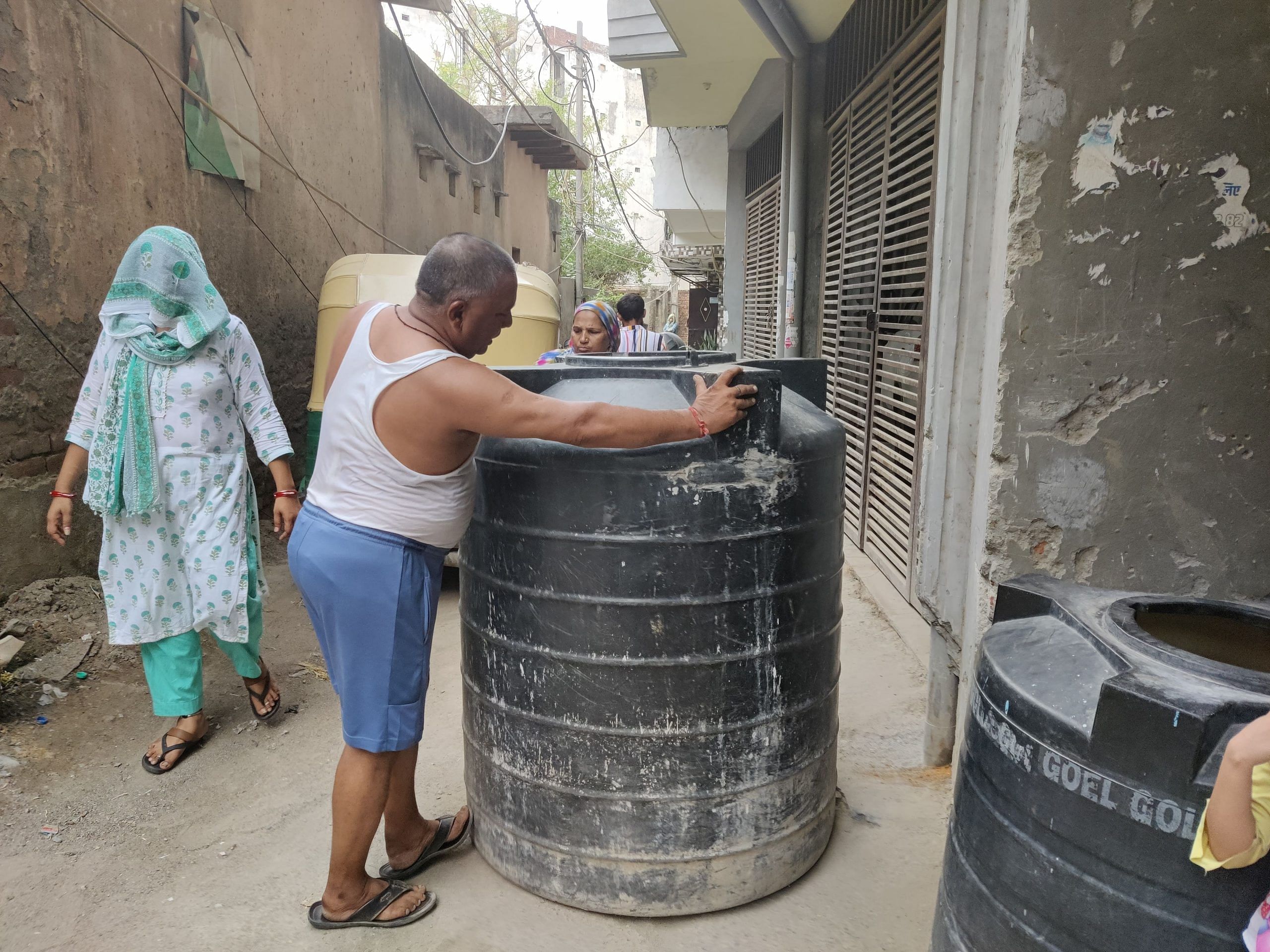
On the other hand, relying solely on the Yamuna to meet Delhi’s needs is not the solution.
Every year, a dispute erupts between the governments of Delhi and Haryana over the release of water from the Yamuna. This year was the worst—images and clips of people clambering onto government water tankers went viral on social media and made headlines across the country.
Environmentalist Vimlendu Jha warned against a knee-jerk reaction to the current water crisis. He suggested a comprehensive water management plan instead.
“The tanker mafia is only capitalising on the existing problem because the poorest of the poor in the city are forced to depend on the tankers for their survival due to the absence of a water management and distribution plan,” he said.
On 31 May, the Delhi government approached the Supreme Court seeking urgent directions to Haryana and Himachal Pradesh to release more water to Delhi, citing a water and sanitation emergency.
“Blaming the heatwave or the plight of the Yamuna or now even the neighbouring state of Haryana is utter dishonesty. It’s shirking away from basic responsibility of governance. Delhi has been terrible with its water management, be it surface water, groundwater or even wastewater,” Jha added.
While this battle plays out in courts, the residents of Devli’s Nai Basti are now considering laying private water pipelines that will connect to the government borewells in their colony. It will be an expensive undertaking, but everyone is willing to contribute.
“I know it might be illegal, but we are doing this out of sheer desperation,” said one resident. Another, Anuja S, hasn’t bathed for three days. With rising humidity levels it’s become unbearable, but she makes do by splashing water on her face and arms.
A pile of her children’s clothes remains unwashed, but that’s not even on her priority list. She is busy juggling the household budget to set aside Rs 10,000 a month from her husband’s salary to pay the private water tanker. The narrow lane leading up to her house does not allow a Jal Board tanker to reach her.
She points to a private water supplier’s house barely 100 metres away where several buffaloes are being hosed down.
“We are here thinking twice before going to the washroom, and they wash their buffaloes with running pipe water. How can you call this a water shortage?”
(Edited by Prashant)



